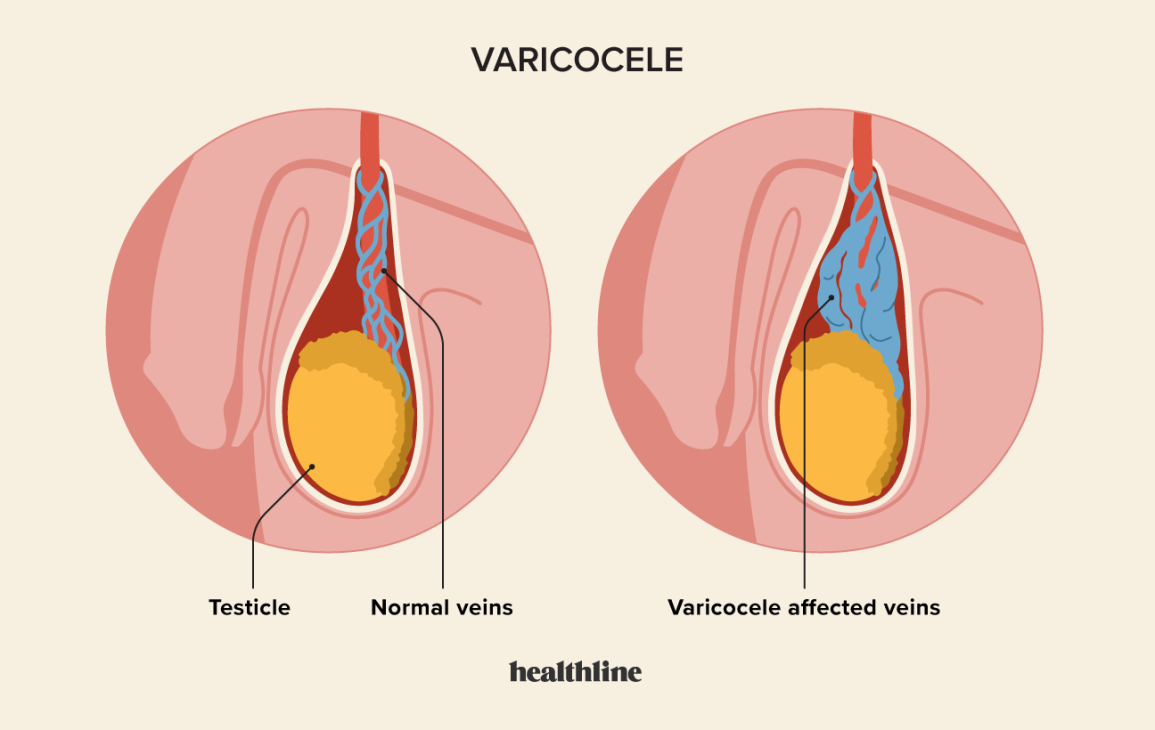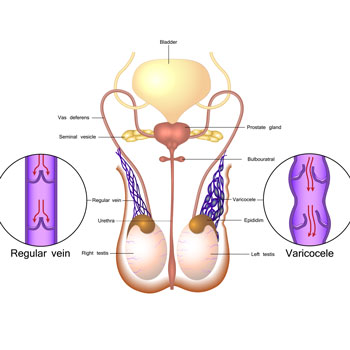Back
Infertility in Males: Varicocele
By Pelvic Health Physical Therapy on 2/2/2024

Infertility is a major public health issue, affecting about 15% of couples of reproductive ages. The male factor is involved in approximately 40-50% of these cases. Infertility is defined as the inability to conceive within a certain period, typically a year. However, infertility can have many factors involved such as: sperm pathologies, blockage of a duct, presence of pain, fracture of the penis, difficulty with ejaculation, anatomical defects, and even psychological issues. Treatment of male infertility may include therapies to target specific diagnoses (surgical or medical), medications to improve spermatogenesis (production of sperm), or artificial reproductive techniques to bypass reproductive barriers in the female partner.
With that said, I’ve divided this discussion up into a 4-part series to help you or a loved one understand a variety of diagnoses and how our pelvic floor physical therapists at Pelvic Health Center can help.
One of the most common causes of male infertility is varicocele, a condition affecting up to 20% of males suffering with infertility. There is even a higher incidence rate with 78-90% of cases occurring on the left side testicular veins.
The testicles receive oxygen-rich blood from two testicular arteries: one artery for each side of the scrotum. Similarly, there are also two testicular veins (also known as spermatic veins) that transport oxygen-depleted blood back toward the heart. Within each side of the scrotum, a network of small veins (pampiniform plexus) transports the oxygen-depleted blood from the testicle to the main testicular vein. A varicocele is the enlargement of the pampiniform plexus (see image 1 below).
The cause and occurrence of varicocele is not fully understood. According to one theory, varicocele is the result of anatomical differences between the spermatic veins. Since the veins insert at different angles – the right spermatic vein inserting to the inferior vena cava at an acute angle and left spermatic vein to the left renal vein at a right angle - an increase in pressure in the left spermatic vein can occur, thereby causing swelling in the affected vein. Another theory suggests that a partial blockage may be the cause of swelling in the spermatic vein.
When oxygen-depleted blood gets backed up in the network of veins, the veins widen (dilate) creating the varicocele.
A varicocele often produces no signs or symptoms; however, in moderate to severe occurrences signs and symptoms may include:
Dull, aching pain or discomfort with prolonged standing or towards the end of the day. Lying down often relieves the pain
If a varicocele is large enough, a mass like a “bag of worms” may be visible above the testicle. A smaller varicocele may be too small to see but is noticeable by touch
The affected testicle may be noticeably smaller than the unaffected testicle
Infertility
The adverse effects of varicocele on spermatogenesis can be attributed to many factors, such as increased testicular temperature, increased intratesticular pressure, hypoxia due to restricted blood flow, backflow of toxic metabolites from the adrenal glands, and abnormalities of the hormonal profile.

How can pelvic floor physical therapy help?
Decrease muscle tension and pain: Pain is typically involved in varicocele, due to the increased pressure in the spermatic vein. Pain can lead to increased muscle tension and trigger points, which adds subsequent pelvic floor dysfunction. At Pelvic Health Center, we utilize a variety of modalities including dry needling, gua sha stone, IASTIM, electrical stim (E-stim), and ultrasound (US)
Improve muscle coordination via biofeedback training: With pain, the body will compensate to protect itself. Biofeedback training and improved muscle coordination will make sure the right parts are doing the right jobs
Improve flexibility and joint mobility: muscles and/or joints affected can either push or pull on your pelvic floor thereby increasing pressure
Improve your posture: the way you carry yourself and put pressure through your pelvic floor matters! Correct posture can alleviate pain and tension felt in the testicles and pelvic floor
If you’re experiencing pelvic floor dysfunctions associated with the issues above, please reach out to us at Pelvic Health Center in Madison, NJ to set up an evaluation and treatment!
Feel free to call us at 908-443-9880 or email us at contact@pelvichealthnj.com.
Read More:
How Chronic Pelvic Congestion in Men Contributes to Prostatitis By Shannon Strauch, PTA, STMT-1 on 12/11/2024 How lymphatic issues can cause symptoms of prostatitis Prostatitis and Tight Pelvic Floor Muscles: A Comprehensive Guide By Shannon Strauch, PTA, STMT-1 on 12/10/2024 How a tight pelvic floor can be the reason for prostatitis symptoms
Are you ready to live pain free?
Request An Appointment